Sir Peter Lely and Studio (1618-1680)
This work formed part of a collection of family pictures and heirlooms of the Saunderson, Viscount Castleton family and their descendants, the Earls of Scarbrough, at their magnificent family seat Sandbeck Park, where the Earls still reside today almost four hundred years later. It was painted in the studio of Sir Peter Lely, the most technically proficient painter in England after the death of Van Dyck, and the dominant court painter to Charles II and James, Duke of York. The sitter was born into one of the wealthiest families in the country. Remarkably, her substantial recipe and accounts book survives today and it offers historians a rare and invaluable glimpse into a seventeenth century household.
The sitter is Grace Saunderson, Viscountess Castleton (1635-1667) and the portrait was painted circa 1665 to 1667. Her hairstyle was a popular one between the wired curled hair of the early 1660’s and the centrally-parted one of the early 1670s. Lady Grace Castleton embodied early modern principles of domestic virtue. The daughter of a wealthy and politically active landowner, she gave birth to eight children during her eleven-year marriage.
Lady Castleton was born Grace Bellasis (Ballassis or Belasyse) in Coxwold in 1635, as the daughter of Henry Belasyse (1604-47) and Grace Barton (d.1660). Her elder brother Thomas (1627-1700) inherited the title 2nd Viscount Fauconberg from his grandfather in 1652 and Earl Fauconberg from 1689. He married Mary, the 3rd daughter of Oliver Cromwell. Indeed, according to legend Cromwell’s body is buried at Sandbeck.
The Belasyse family were settled in county Durham in the middle-ages. It was not until the dissolution of the monasteries that the centre of the family's interests moved to Yorkshire. Through the sixteenth, seventeenth and eighteenth centuries the Newburgh estates were enlarged and consolidated by the descendants who were granted the titles of baronet in 1611, Baron Fauconberg of Yarm in 1627, Viscount Fauconberg of Henknowle in 1643, and Earl Fauconberg in 1689. Newburgh Priory was the seat of the Belasyse family (acquired in 1540). Upon the death of Lady Charlotte Belasyse in 1825, without male heir, Newburgh passed to George Wombwell, 3rd Baronet (her nephew) – and today it is still lived in by the Wombwell family.
Grace married the English soldier and politician George Saunderson, 5th Viscount Castleton (c.1631-1714) by 1656 and the couple had eight sons. When Saunderson began serving in Parliament in 1661, Grace apparently followed him to London but she died there suddenly (measles or smallpox) in 1667. A funeral elegy dedicated to her (see photo) states she was a model wife, and, indeed, her abilities in this area appear to have been so great that she was, in the afterlife, able metaphorically to straddle both worlds, in a spiritually bigamous relationship with both Christ and her earthly husband.
George re-married Sarah Evelyn in 1675 (daughter and coheir of Sir John Evelyn II of West Dean, Wilts, widow of Sir John Wray, 3rd Bt., of Glentworth, Lincs., and of Thomas Fanshawe, 2nd Viscount Fanshawe of Dromore). Their marriage was apparently a secret one, as the original entry in the Temple Church register was simply ‘George and Sarah two persons of quality’, the surnames being added subsequently. She outlived her husband by three years. George died in 1714 and was succeeded by his only surviving son James (Sandbeck c.1667-1723) who became Baron Saunderson of Saxby in 1714, 6th Viscount Castleton of Sandbeck in 1716, and 1st Earl of Castleton in 1720.
Sandbeck Park was the Saunderson family seat and it remained in the hands of the Castleton’s until James died without an heir in 1723 (his own son died before him having previously married the heiress, Elizabeth Wray, who brought Glentworth and other Lincolnshire estates to the family). He left extensive estates in Yorkshire and Lincolnshire, as well as a bequest of £16,000. Sandbeck and Glentworth Hall passed to his maternal cousin Thomas Lumley (later 3rd Earl of Scarbrough) who took the additional surname Saunderson. James’ mother and Thomas Lumley’s grandmother were Bellasis sisters (Thomas Lumley also inherited his family’s ancestral home – Lumley Castle). Sandbeck Park remains the family seat of the Earls of Scarbrough today.
Lady Castleton started her recipe collection as a young woman. The collection was written into a small leather-bound notebook decorated with a coat of arms and closed with metal clasps. She inscribed her name on the inside cover of the book and wrote medical recipes in the front and recipes for ‘good cookery’ in the back. The book contains approximately 234 pages of recipes written on 180 numbered leaves. The first leaf is headed, "A book of receiptes which was given me by severall men for severall causes, greefes and disseases, and these first were mr mathias his receipts". The notebook contains just over 200 recipes offering instructions to make a wide range of medicines and foodstuffs, including recipes for fruit wines, mead, cider, metheglin, and chocolate.
Upon her marriage to George Saunderson, the recipe book accompanied Grace to her new home and to mark her change in status, she crossed out the original inscription and, confidently, wrote underneath it “The Lady Grace Castleton’s Booke of receipts”. After her death the book remained in the possession of the Saunderson family, and other family members, including Saunderson’s second wife Sarah (the widow of Lord Thomas Fanshawe, 2nd Viscount Fanshawe, whose aunt was the notable cookbook keeper Anne Fanshawe) continued to add to it well into the eighteenth century, for example, a recipe for "The bitter watter for That Epidemic Destemper” dated 1684.
Once Charles II was restored as King in 1660 a priority was to re-form the previous royal court, which was a highly visible stage on which powerful men and woman played and lead to increased levels of power and wealth. Part of this was through artistic patronage following fashions set by the royal family and the most important courtiers. As such, the King named Peter Lely, acknowledged as the best artist in England, his official painter and ‘image maker’.
Lady Castleton has been depicted within an elaborate sculpted oval, the type of which was employed by many artists working in England at the time, but it was a firm favourite of Lely. The gown seen here is of the finest silk and the accessory ‘par excellence’ – pearls – are abundant. The pear-shaped earrings are called unions d’excellence reflecting the difficulty of finding perfectly matched pearls of such large size. They could range up to 20 millimetres in diameter. The costume and jewellery are of course indicative of the family’s wealth however (not in the present portrait) fake pearls were often worn and there was a large market for them.
The portrait is a fine example of English Baroque portraiture and it illustrates the painter's skill, note the very lifelike treatment of the curl that falls from her forehead. Through examples such as this it is easy to see why Sir Peter Lely’s talent dominated the art world in the second half of the seventeenth century in England and everyone of significance sat to him.
Peter Lely, the son of a Dutch military officer, was born in Germany at Soest in Westphalia in 1618. He studied in Haarlem before moving to London in 1641, and in 1647 he became a freeman of the Painter-Stainers’ Company. Initially, Lely painted landscapes, religious, and mythological scenes, however, he quickly recognised the strength of the English market for portraiture and this is where he turned his attention. He was employed by the Duke of Northumberland, who had the royal children in his care, and he was able to study the Northumberland Collection of works by Van Dyke and Dobson. By the end of the Commonwealth, he had become the best-known portraitist in England. In 1661 he was appointed ‘Principal Painter in Ordinary’ to the King and awarded a salary of £200 per annum. From then he maintained a busy and successful practise painting the most elite and influential members of the court and of everyone of importance. His studio was prolific and employed many assistants, as was the common studio method. His success thus meant that he established the basic English portrait style for decades.
Lely was a connoisseur and was known for his own fine art collection. By the end of his life, he had assembled one the finest non-princely collections in Europe including more than 25 of Van Dyke’s major English works of Old Masters including Veronese, Titian, Claude Lorrain and Rubens, and a fabulous collection of drawings, was broken up and sold after his death, raising the immense sum of £26,000. Some items in it which had been acquired by Lely from the Commonwealth dispersal of Charles I's art collections, such as the Lely Venus, were re-acquired by the Royal Collection.
We are grateful to Diana Dethloff and David Taylor for endorsing the attribution based on photographs.
Labels: See photo
Provenance:
The sitter at Sandbeck Park, the Saunderson and Lumley family seat;
By decent to George Augusta Lumley-Saunderson, 5th Earl of Scarbrough (1782-1807);
His sale, sold by Mr. Dawson on the premises by order of the executors, Sandbeck Park, Bawtry, Yorkshire, 2-7 Nov, 1807;
Lord Lansdowne (according to an old handwritten label on the stretcher);
Acquired by the father of the present owner, 1970s;
Thence by descent
Measurements:
Height 89cm, Width 79cm framed (Height 35”, Width 31” framed)



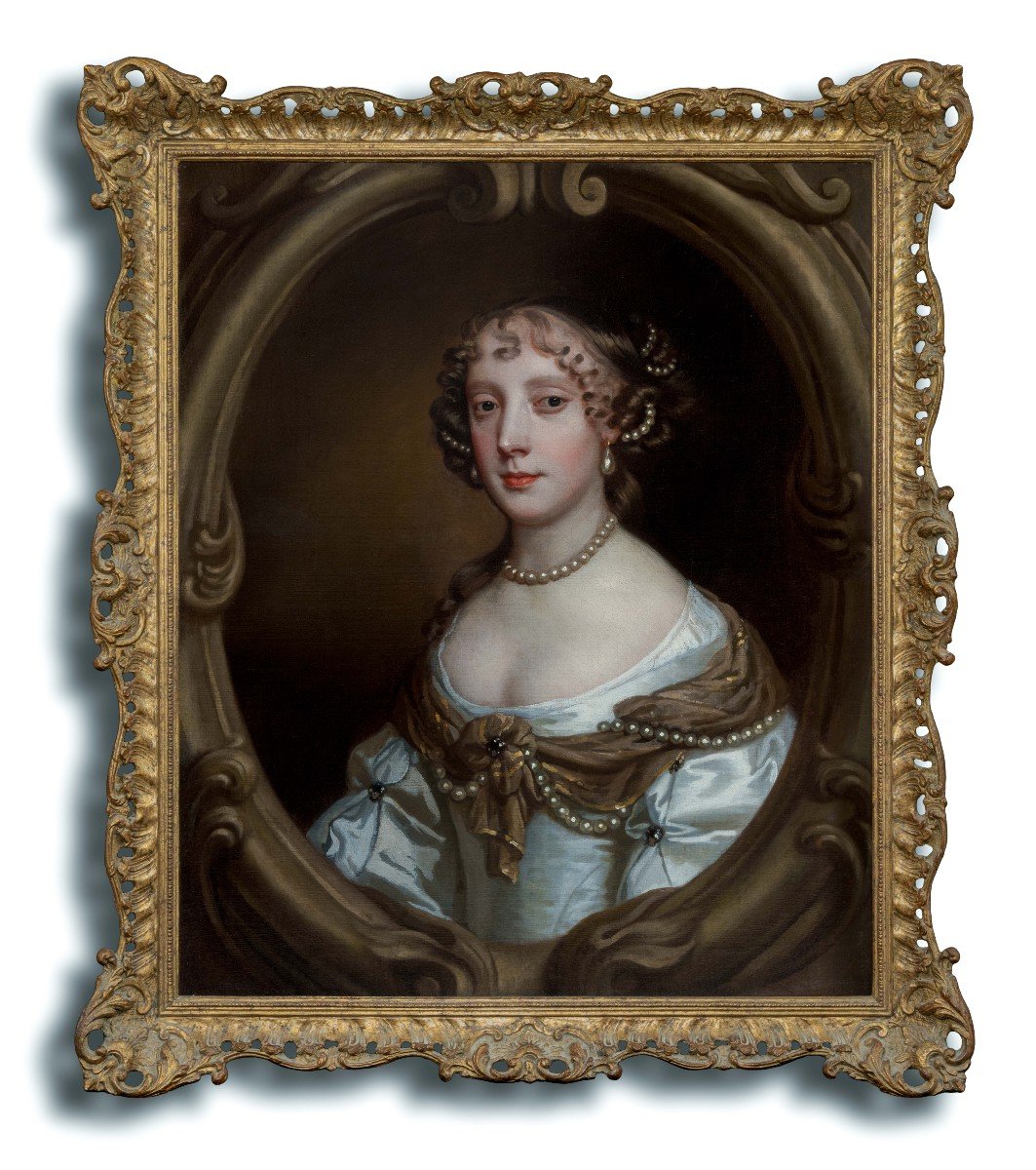
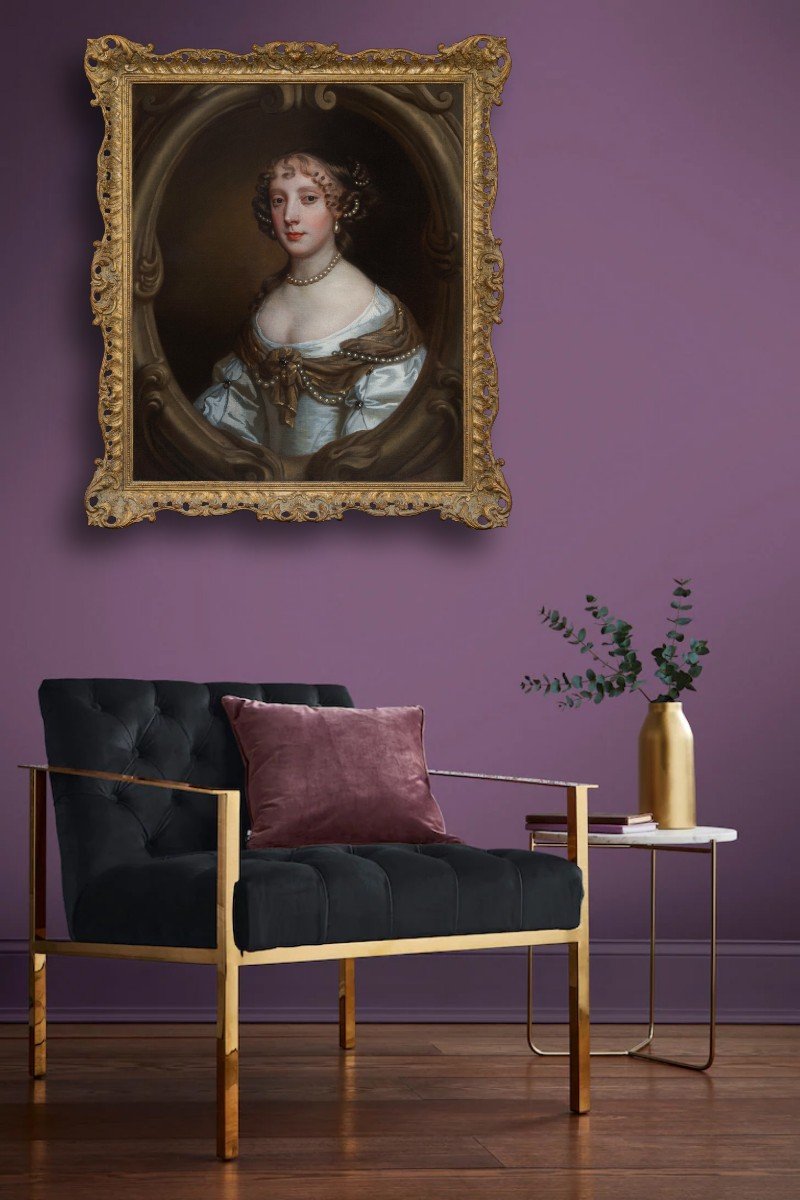
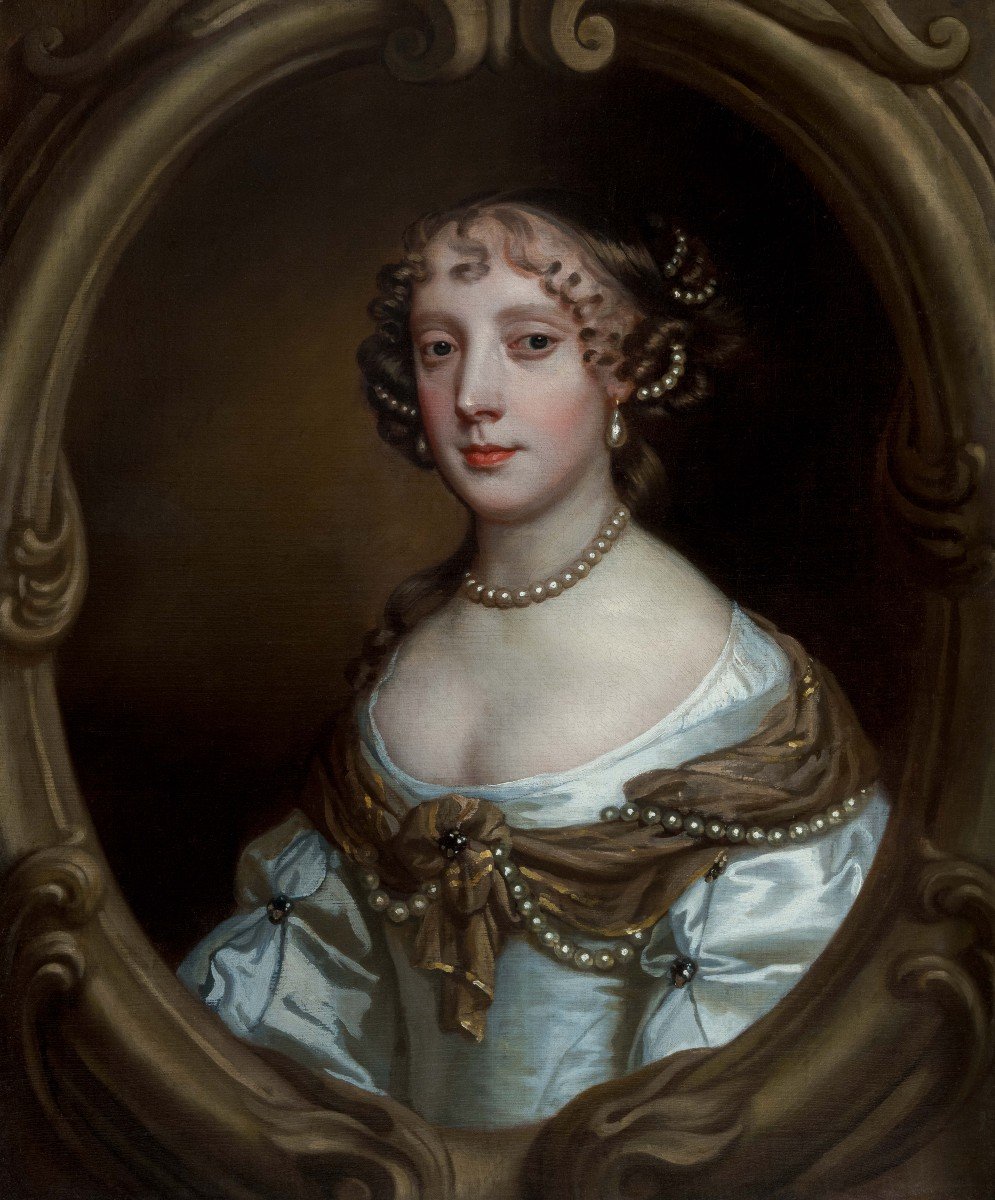


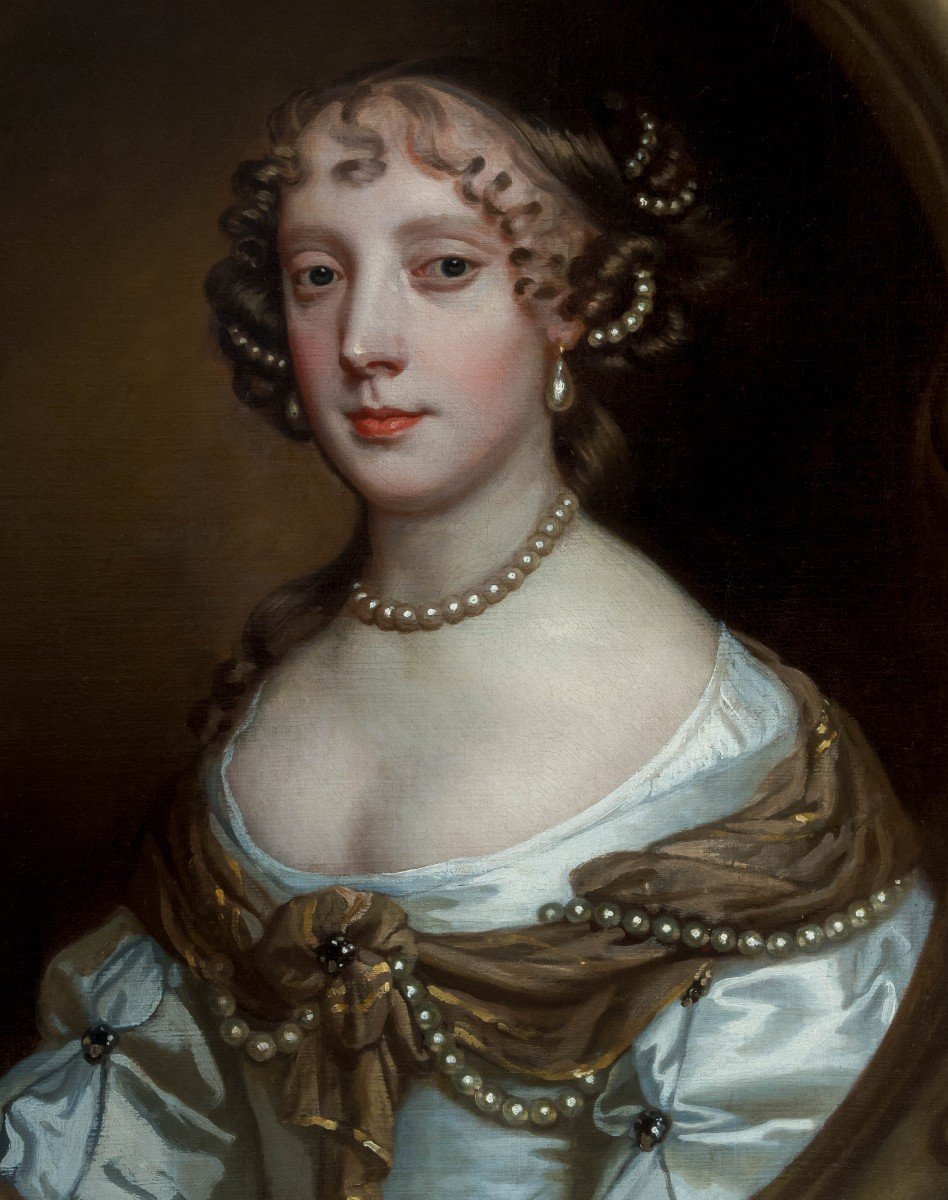



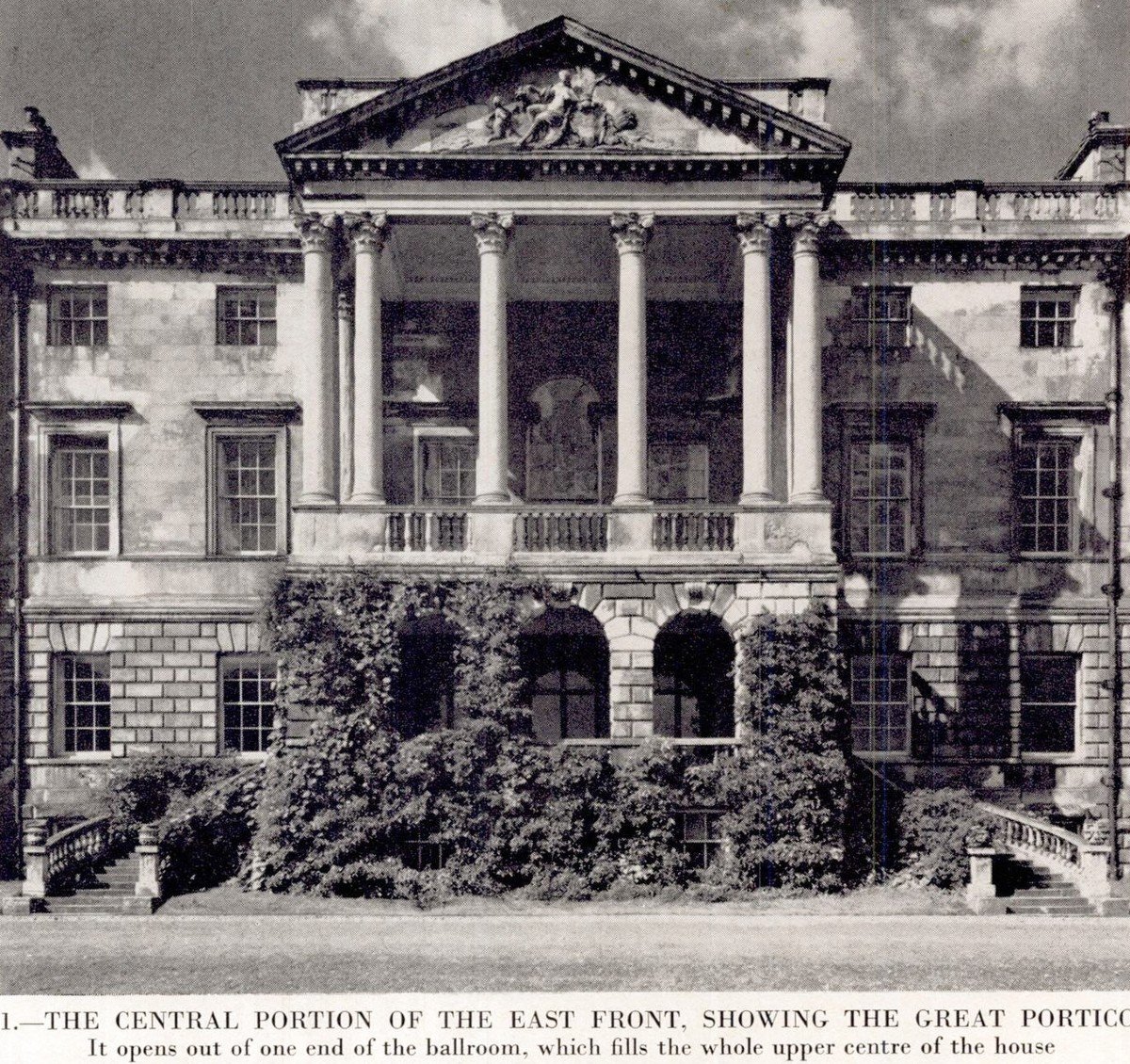







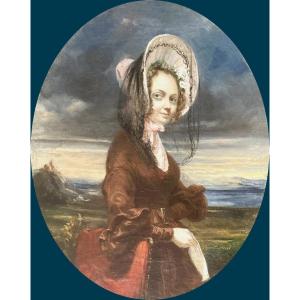


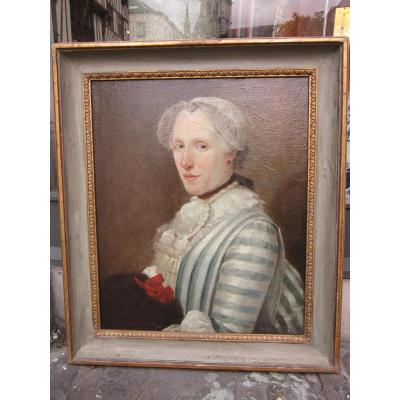




 Le Magazine de PROANTIC
Le Magazine de PROANTIC TRÉSORS Magazine
TRÉSORS Magazine Rivista Artiquariato
Rivista Artiquariato
